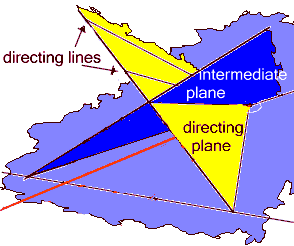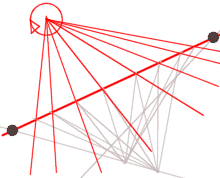It is at once evident that stepping a line across the plane must always rotate that line in a point.
We have the dual of stepping on a line.
We would see the rotation arrested at the measure's end-points.
What sort of measure would let the rotation continue indefinitely?

When all is done, we see that we can conveniently direct our stepping line in Z through the stepping point of a linear measure, and do not need to go through the fairly elaborate construction on the left—though we did need to do it at least once, to be quite sure of our principles!
